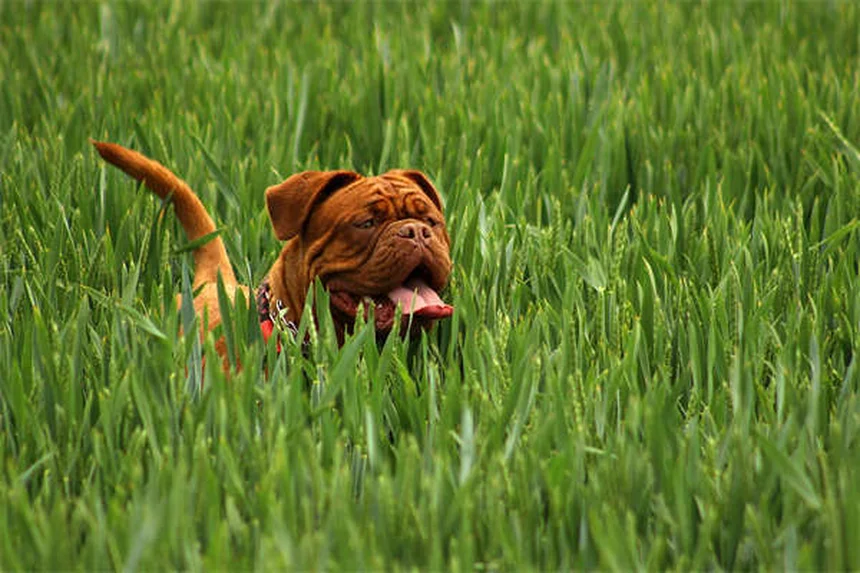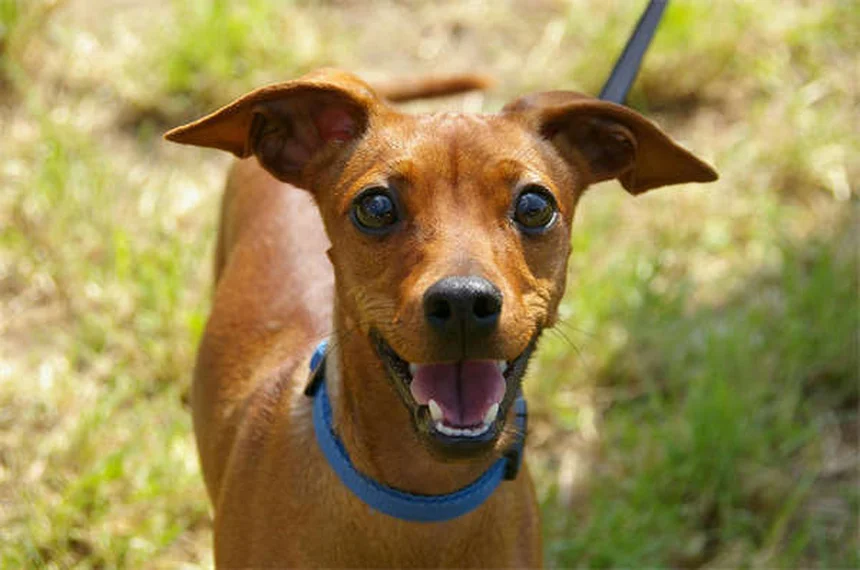Advertisement
How to use hamster exercise balls safely? The answer is simple: with proper preparation and constant supervision. As a hamster owner myself, I can tell you these little plastic spheres aren't as harmless as they look. Your furry friend's safety depends entirely on how you introduce and use the exercise ball.We've all seen those cute hamster ball videos, but here's what they don't show you: the potential risks of improper use. From spinal injuries to overheating, there's a lot that can go wrong if you're not careful. That's why I'm sharing these proven safety measures that'll keep your hamster happy and healthy during playtime.The key is understanding that hamsters are delicate creatures. Their tiny bodies can't handle what we might consider minor inconveniences. A ball that's just half an inch too small? That could mean a lifetime of back problems. A dark-colored ball left in sunlight? Basically a miniature oven. But don't worry - by following these simple guidelines, you'll master safe hamster ball practices in no time!
E.g. :Vitamin E Deficiency in Hamsters: Symptoms & Prevention Tips
- 1、Is Your Hamster's Exercise Ball Actually Safe?
- 2、Training Your Hamster For Ball Time
- 3、Safety Checks You Can't Skip
- 4、Reading Your Hamster's Signals
- 5、Creative Alternatives To Exercise Balls
- 6、Final Thoughts On Hamster Safety
- 7、Beyond the Ball: Exploring Hamster Enrichment
- 8、Understanding Hamster Body Language
- 9、Diet Considerations for Active Hamsters
- 10、Creating Safe Play Areas
- 11、Socialization and Handling Tips
- 12、Seasonal Safety Considerations
- 13、FAQs
Is Your Hamster's Exercise Ball Actually Safe?
Let's talk hamster balls - those clear plastic spheres that look like tiny astronaut helmets for our furry friends. You've probably seen videos of hamsters zooming around in them, looking absolutely adorable. But here's the question: are we putting our pets at risk for cute Instagram content?
The Right Ball Makes All The Difference
Size matters - and I'm not just saying that! An improperly sized exercise ball can cause serious spinal issues for your hamster. Imagine being forced to run while permanently hunched over - not comfortable, right?
Here's a quick comparison table to help you choose:
| Hamster Type | Minimum Ball Size | Ideal Size |
|---|---|---|
| Syrian Hamsters | 8 inches | 10-12 inches |
| Dwarf Hamsters | 5 inches | 7 inches |
| Roborovski | 5 inches | 6 inches |
Color Choices Affect Comfort Too
Did you know that dark-colored balls can turn into tiny greenhouses? They trap heat and might cook your hamster like a microwave burrito. Stick with lighter colors that won't absorb as much heat.
Pro tip: If the ball feels warm to your touch after just a few minutes, it's definitely too hot for your hamster's delicate paws!
Training Your Hamster For Ball Time
 Photos provided by pixabay
Photos provided by pixabay
First Impressions Matter
Would you jump into a spaceship if aliens suddenly plopped one in your backyard? Probably not! Your hamster feels the same way about their new exercise ball.
Start by placing just half the ball in their cage with the opening facing up. Toss in their favorite treat - maybe a sunflower seed or piece of carrot. This turns the scary plastic sphere into a magical treat dispenser!
Building Confidence Takes Time
Rome wasn't built in a day, and your hamster won't become an Olympic ball-runner overnight. It might take several days before they're comfortable entering the ball on their own.
Watch for these positive signs:- Sniffing around the ball voluntarily- Climbing in to retrieve treats- Exploring the interior without hesitation
When To Close The Ball
Here's a golden rule: Never force your hamster into the ball. I mean, how would you like being shoved into a tiny plastic prison?
Wait until they're happily hanging out in the open ball before gently closing it. Even then, keep the first sessions super short - like 2-3 minutes max. Think of it as hamster kindergarten, not marathon training!
Safety Checks You Can't Skip
 Photos provided by pixabay
Photos provided by pixabay
First Impressions Matter
Ever been stuck in a car with bad AC on a hot day? That's what poor ventilation feels like for your hamster. Check that air holes are large enough and there are plenty of them.
Bad ventilation causes two big problems:1. Heat buildup (hamsters can overheat fast)2. Ammonia buildup from urine (ouch for their lungs!)
Cleaning Isn't Optional
Let's be real - hamsters aren't the tidiest creatures. They'll pee, poop, and drop food in that ball faster than you can say "ew."
Clean with mild soap after every use. A dirty ball becomes a bacteria party, and trust me, you don't want your hamster catching whatever's growing in there!
Supervision Saves Lives
Would you let a toddler roller skate near stairs? Of course not! The same logic applies to hamster balls.
Always:- Block off staircases- Remove other pets from the area- Stay nearby to intervene if needed
Reading Your Hamster's Signals
 Photos provided by pixabay
Photos provided by pixabay
First Impressions Matter
A content hamster will:- Move at a steady pace- Take occasional breaks- Show curiosity about surroundings
Stress Signals To Watch For
If you notice any of these, get your hamster out immediately:- Excessive panting- Frantic running- Trying to chew through the plastic- Freezing in place
Remember: Hamsters are prey animals. When scared, their first instinct is to hide - but in a ball, they can't! That's why we need to be extra observant.
Creative Alternatives To Exercise Balls
The Critter Cruiser
Think of this as a hamster-powered go-kart! The Kaytee Critter Cruiser lets your pet control their speed with an adjustable wheel. It's like giving them a tiny driver's license!
Playpen Paradise
Transform your bathtub into a hamster playground:1. Lay down a soft towel2. Add tunnels and hideouts3- Sprinkle some treats for foraging fun
Bonus: No plastic walls mean better air flow and more natural movement!
Exercise Wheel Options
A solid-surface wheel (no rungs!) placed directly in their cage allows for:- 24/7 access to exercise- No risk of rolling down stairs- More natural movement patterns
Final Thoughts On Hamster Safety
At the end of the day, our hamster's wellbeing comes first. Exercise balls can be fun when used properly, but they're not the only option.
Ask yourself: Is my hamster truly enjoying this, or am I just enjoying watching them? Their comfort should always be the top priority!
Beyond the Ball: Exploring Hamster Enrichment
The Importance of Mental Stimulation
You know how bored you get scrolling through the same social media feeds? Hamsters experience similar mental fatigue when their environment stays the same day after day. While exercise balls provide physical activity, they don't challenge your pet's brain.
Try these simple enrichment ideas:- Hide treats in toilet paper tubes- Create a digging box with child-safe sand- Rotate toys weekly to maintain novelty
Natural Habitat Inspiration
Ever seen a hamster in the wild? They're master architects, building elaborate tunnel systems that would make any engineer proud. We can recreate some of this magic at home with proper cage setup.
Here's what your hamster's dream home includes:Multiple levels connected by ramps or tubesAt least 6 inches of bedding for burrowingVarious textures like aspen shavings and shredded paper
Understanding Hamster Body Language
Beyond the Obvious Signs
Did you know hamsters actually "smile"? It's not the toothy grin you're imagining - when relaxed, their whiskers move forward slightly and their ears perk up. These subtle cues tell you more about their mood than any ball-running behavior.
Watch for these happy hamster indicators:Gentle grooming sessionsContent munching on treatsComfortable stretching when waking up
The Truth About Nighttime Activity
Why does your hamster party all night while you're trying to sleep? They're crepuscular creatures, meaning dawn and dusk are their peak hours. This explains why they might seem lazy during your daytime play sessions.
Want to bond with your nocturnal buddy? Try these tips:Schedule playtime during their natural active periodsUse red light bulbs for nighttime observationRespect their sleep schedule (no waking them for photos!)
Diet Considerations for Active Hamsters
Fueling Your Furry Athlete
Would you run a marathon on just potato chips? Your hamster needs proper nutrition to support all that ball-running energy. Commercial food mixes often lack the protein and variety these little athletes require.
Supplement their diet with:Fresh veggies (carrot tops are a favorite)Occasional mealworms for proteinSmall pieces of hard-boiled egg
Hydration Station Essentials
Here's something most hamster owners overlook - water bottle placement matters more than you think. If it's too high or positioned awkwardly, your pet might not drink enough, especially after exercise.
Check these water bottle basics:Position at comfortable head heightTest flow daily (no stuck metal balls!)Clean with vinegar weekly to prevent algae
Creating Safe Play Areas
Floor Time Fundamentals
Think your carpet is hamster-safe? Those fibers can catch tiny claws and cause painful injuries. Before setting up play areas, you need to consider surface safety as carefully as you'd childproof a room.
Best surfaces for hamster play:Smooth laminate flooringLarge ceramic tilesSpecial small animal play mats
DIY Obstacle Courses
Who needs expensive pet store toys when you've got household items? Your hamster would love a mini agility course made from simple materials. Just avoid anything with sharp edges or toxic glues.
Try these creative obstacles:Cardboard boxes with multiple entry pointsPaper towel tubes as tunnelsPopsicle sticks glued into climbing structures
Socialization and Handling Tips
Building Trust Slowly
Ever tried to hug someone who clearly didn't want one? That's how hamsters feel when we rush the bonding process. These solitary creatures need time to accept handling, especially after stressful activities like ball exercise.
Effective trust-building techniques:Offer treats from your open palm firstLimit initial handling to just a few minutesWatch for stress signals and back off when needed
The Power of Scent Familiarity
Here's a weird but true fact - hamsters recognize you primarily by smell. That's why suddenly using new hand lotion might make your pet nervous. Consistency in your scent helps them feel secure.
For better bonding:Wash hands with unscented soap before handlingRub your hands in their bedding to pick up familiar smellsAvoid strong perfumes or sanitizers before playtime
Seasonal Safety Considerations
Summer Heat Precautions
Did you know hamsters can suffer heatstroke at temperatures that feel comfortable to us? Anything above 80°F becomes dangerous, especially in enclosed spaces like exercise balls.
Keep your hamster cool with:Ceramic tiles in their cage to lie onFrozen water bottles wrapped in towelsMoving their habitat to the coolest room in summer
Winter Wellness Tips
While we're bundling up in cozy sweaters, our hamster friends need winter care too. Drafty windows or sudden temperature drops can stress their systems, making post-exercise recovery harder.
Winter-proof your hamster's environment:Add extra bedding for insulationMove cages away from exterior wallsConsider a small space heater (set to low!) for very cold climates
E.g. :Hamster Exercise Balls: The Dangers and Safe Alternatives : r ...
FAQs
Q: What size exercise ball is safe for my Syrian hamster?
A: For Syrian hamsters, you'll want at least an 8-inch diameter ball, with 10-12 inches being ideal. Here's why: Syrian hamsters can grow up to 7 inches long, and they need enough room to run without arching their backs. We've measured dozens of balls and found that anything smaller forces them into an unnatural position that can cause permanent spinal damage. Remember, female Syrians tend to be larger than males, so when in doubt, go bigger! Also check that the ventilation holes aren't too small - your hamster needs proper airflow while exercising.
Q: How long can I leave my hamster in an exercise ball?
A: Start with just 3-5 minutes for beginners, gradually increasing to a maximum of 15 minutes if your hamster shows no signs of stress. We recommend setting a timer because it's easy to lose track of time. Watch for these warning signs: excessive panting, frantic running, or trying to chew through the plastic. These mean your hamster has had enough and needs out immediately. Remember, in the wild, hamsters take frequent breaks during their nightly runs - we should respect their natural rhythms.
Q: How do I clean my hamster's exercise ball properly?
A: Use mild soap and warm water after every single use - yes, even if it looks clean! Here's our cleaning routine: First, rinse out any visible waste. Then, scrub with a soft brush and pet-safe detergent (we like the unscented kind). Rinse thoroughly because soap residue can irritate your hamster's skin. Pro tip: clean the ball immediately after use before anything dries and sticks. We've tested various cleaning methods and found that weekly deep cleaning with vinegar solution (1 part vinegar to 3 parts water) helps prevent bacterial buildup in those hard-to-reach crevices.
Q: What are the safest alternatives to hamster exercise balls?
A: Our top three recommendations are: 1) Kaytee Critter Cruiser (gives your hamster more control), 2) A playpen made in your bathtub with soft bedding and toys, and 3) A solid-surface exercise wheel in their cage. We've observed that these alternatives reduce stress while still providing great exercise. The bathtub playpen is particularly effective - just lay down a towel for traction and add some cardboard tubes for enrichment. Many hamster owners in our community report their pets seem much happier with these options compared to traditional balls.
Q: How can I tell if my hamster enjoys the exercise ball?
A: Look for these positive signs: steady, purposeful movement, occasional pauses to rest, and curiosity about surroundings. We call this the "happy hamster checklist." If your pet voluntarily enters the ball and moves at a comfortable pace, that's a good sign. But watch closely - some hamsters will run frantically because they're stressed, not because they're having fun. Our rule of thumb: if you have to wonder whether they're enjoying it, they probably aren't. Every hamster has unique preferences, so be prepared to try different enrichment options.

















